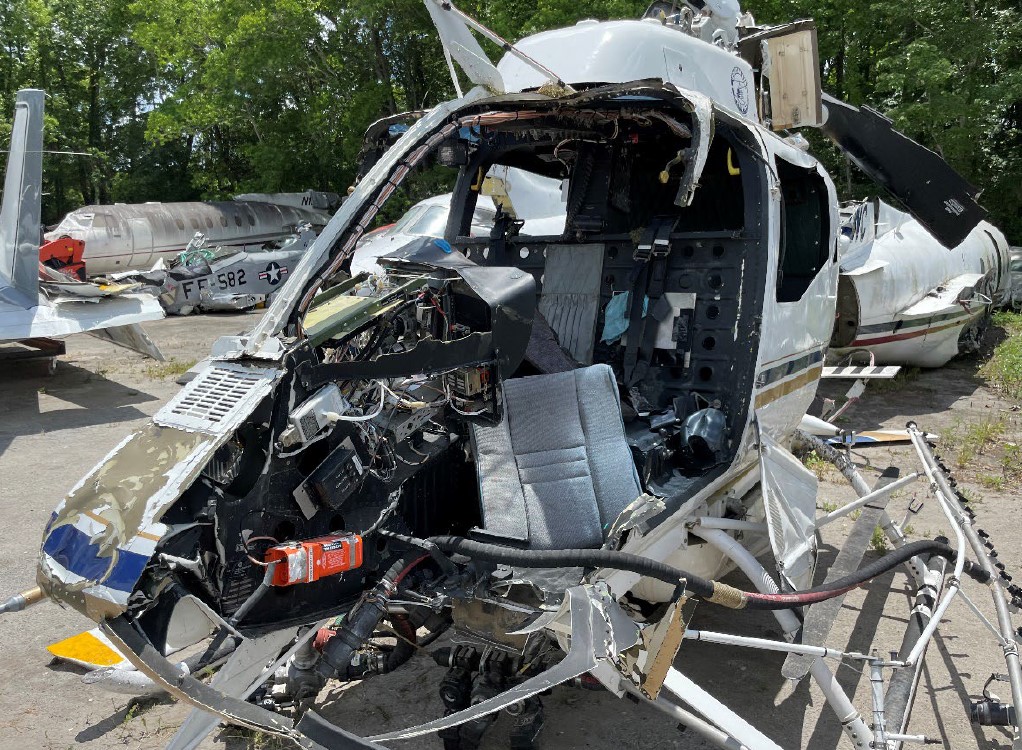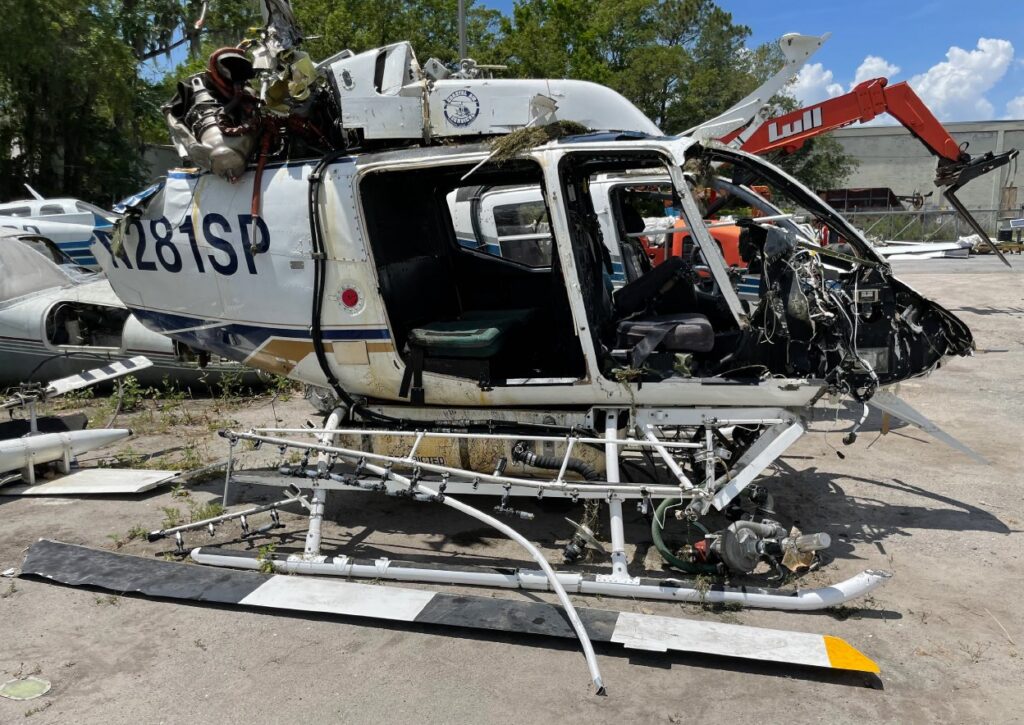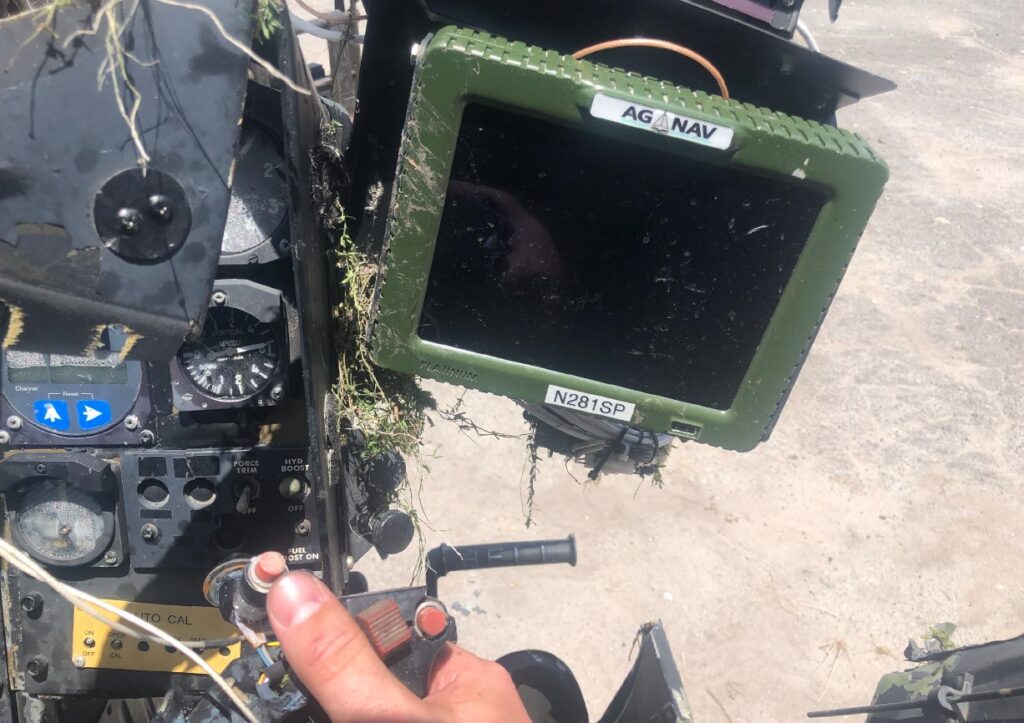Double Trouble: An Operator Lost Two Helicopters in the Same Lake in 12 Hours
On 26 April 2022 two helicopters of Coastal Air Services, both performing Part-137 aerial application operations, crashed into Lake Apopka, near Oakland, Florida, just 12 hours apart.
Accident 1: B206B N206BX
At 07:16 Bell 206B N206BX, was being flown by a 55 year old pilot with 10,725 hours of experience, 3,087 on type. It was one of three helicopters conducting spraying (most likely for mosquito control). Spraying is typically done at 7-15 ft.
The US National Transportation Safety Board (NTSB) safety investigation report, issued 13 October 2022, explains:
He stated that he established course on his spray line but “lost sight of everything looking forward due to the glare off the water and the sun position.”
He recalled having no depth perception when he looked down at the water and could not recall the helicopter impacting the water but recalled a momentary shudder followed by the helicopter coming to rest inverted.

Wreckage of Coastal Air Services Bell 206B N206BX in Lake Apopka (Credit: Florida Air Recovery via NTSB)
The pilot egressed via the right hand front door and received minor injuries. In the accident report form the pilot recommended spraying with the sun behind the aircraft to reduce glare, commence operation later (i.e. when the sun is higher) and that boats on the water add peripheral cues.
The NTSB Probable Cause was: A collision with water following a loss of visual reference to the water surface due to sun glare.

Wreckage of Coastal Air Services Bell 206B N206BX After Salvage (Credit: Florida Air Recovery via NTSB)
The Transportation Safety Board of Canada (TSB) recently reported glare as a factor in a wire strike to a Robinson R44 C-FVPA.
According to the NTSB after the accident to N206BX…
…a safety briefing was held with the pilots, and they were instructed to maintain constant communications with the loader truck.
During the safety briefing there was no insight available into the first accident.
Flying resumed at 12:15.
Accident 2: OH-58A+ N281SP
At 19:00 ex-military Garlick Bell OH-58A+ N281SP was being flown by a 54 year old pilot with 16,835 hours of experience. This was only his second day flying for the company. He had woken at 04:00 and had started flying at c07:00.
The NTSB explain in their safety investigation report that earlier…
…that afternoon the pilot noted that it was difficult to judge his height above the water and advised another company pilot via radio of that fact. …the water was “like a mirror,” which hampered his depth perception.
By 18:30 the pilot noticed there were no longer any Florida Fish and Wildlife Conservation Commission (FWC) air boats on the lake. He was operating slightly higher than normal at 15-20 ft and at c 55 knots.
Later that evening, during a final application pass while he was looking down at the GPS, the helicopter
impacted the water.

Wreckage of Coastal Air Services Garlick Bell OH-58A+ N281SP After Salvage (Credit: Florida Air Recovery via NTSB)
In this type of operation pilots use their AG-NAV GPS display to help fly the right spray line.

Position of Agnav GPS Display on Coastal Air Services Garlick Bell OH-58A+ N281SP Seen After Salvage (Credit: Florida Air Recovery via NTSB)
The pilot received minor injuries (scraped shins). He was rescued by climbing on to the skids of the remaining helicopter. This was because the pilot had briefed his colleagues
…that because of the alligators he had seen in the lake, if his helicopter went down…he would not be swimming out.
The pilot explained during an NTSB phone interview that he had had a near miss during his first day of flying (15 April 2022) with the company when due to calm wind conditions the lake was glassy. The NTSB asked how low the helicopter got and they recorded that it was:
Low enough to scare him and causing him to jerk on the controls.
However, NTSB did not ask if that had been reported or mentioned to anyone else.
The pilot suggested buoys on the water surface would have aided visual reference or stopping spraying in dead calm conditions.
The NTSB Probable Cause was: The pilot’s decision to continue the low-altitude aerial application flight over water conditions that degraded his depth perception, which resulted in an inadvertent collision with the water.
Aerossurance has previously discussed two cases where a glassy water surface contributed to an accident:
Our Observations
These two NTSB reports were issued at the same time but there was no attempt by investigators to draw any consolidated conclusions, let alone make any safety recommendations.
In contrast both pilots recorded reflective safety suggestions in their report forms that were ignored in the NTSB final reports.
However, while some external threats (like the alligators!) were discussed in briefings or raised on the radio (like the glassy conditions) its not clear if the pilots were debriefing their own near misses with the company or colleagues.
Safety Resources
The European Safety Promotion Network Rotorcraft (ESPN-R) has a helicopter safety discussion group on LinkedIn. You may also find these Aerossurance articles of interest:
- EC135P2 Spatial Disorientation Accident
- HEMS S-76C Night Approach LOC-I Incident
- Fatal Wisconsin Wire Strike When Robinson R44 Repositions to Refuel
- Canadian Flat Light CFIT
- Heliski Flat Light Flight into Terrain
- US Police Helicopter Night CFIT: Is Your Journey Really Necessary?
- HEMS EC135T1 CFIT During Mountain Take Off in Poor Visibility
- A Short Flight to Disaster: A109 Mountain CFIT in Marginal Weather
- HEMS Black Hole Accident: “Organisational, Regulatory and Oversight Deficiencies”
- Antarctic Helicopter Accidents
- Alaskan AS350 CFIT With Unrestrained Cargo in Cabin
- Low Viz Helicopter CFIT Accident, Alaska
- Loose Clothing Downs Marijuana Survey Helicopter
- When Habits Kill – Canadian MD500 Accident
- EC120 Forgotten Walkaround
We have previously written:

Recent Comments